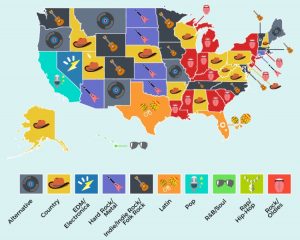IMPORTANT questions
Did you do the readings and pay attention?
Can you manage the basics of DAW software?
Written part is the story, illustration through the music
Themes from this class:
The problem of attention: Digital media undermine/redirect our attention
oDynamic range compression, restructuring attention and benefits to multitasking
oCarr’s book argued that digital media makes us scattered and incapable of paying attention
oBush’s essay, which argued digital media can allow us to focus better by eliminating silos around categories of knowledge
oMiller’s book, pointing out how music marketing constantly required listeners to pay attention to race
oClaude Shannon’s work pointed out how much of language was redundant and did not need to be paid attention to.
oMarketing: fight for attention, modern digit marketing: trying to get me to like things similar to what I already like and make it harder to pay attention to different things (AMAZON, GOOGLE, ADS ON WEBSITES)
oWitts:
Displacement: The physical displacement people from their homes in migration and immigration but also the displacement of people in space and time (who are the people singing and drumming in Garage Band? And the displacement of meanings (why can I drop a style of guitar that started in Hawaii but now sounds like American “country” into my slamming dance track?
oSpace, time and technology
oCarr’s book on the construction of the self- the displacement of the person who is reading and the person who is being read to
oLecture on immigration and migration genre
oMiller’s book
oClaude Shannon’s book
Racial Categories: Racial division and categories being both reinforced and possibly undermined in popular music. We see people’s local and social and individual musical practices channeled into marketing categories. But we also see lots of borrowing and repurposing and adaption
oThe lecture on the minstrel show
oMiller’s book
oWitt’s book
oLecture on Genre
oDiscussion of digital marketing and preference tracking-does it show you new stuff or drive you back into your herd?
Enclosure VS openness: “information wants to be free” VS siloing” of information and access. WE see this in the Cold War origins of computing, in the history of the internet, and the debates about copyright and about piracy and about sampling and musical call outs.
oCarr, Bush, Miller, Witt’s book about music piracy
oLecture on the Cold War
oLecture on the origin of the internet
oDiscussions of sampling and copyright
Individual VS Social Music was always social before the world of recording. It becomes increasingly individualized.

